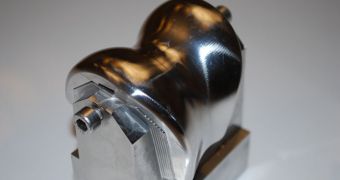Restoring at least partial function to paralyzed limbs has been a goal for researchers for many years, and now experts at the University of Michigan (U-M) have made an important step in this direction. They created a device that will ultimately enable the paralyzed to walk again.
The new neurological technology is still in its infancy, and practical applications at a large scale are still several years away. However, when the technology does mature, it may enable the paralyzed to regain their natural movement abilities.
Interestingly enough, the U-M team refers to its device as a non-invasive brain implant, which may seem a little weird. Unlike other similar implants, it is not place directly in the brain, requiring massive brain surgery.
Still, some skull drilling is required. On the bright side of things, the coin-sized implant is placed directly on the surface of the brain, and is then covered by skin to prevent dangerous infections.
The device works by collecting readings on neural firing patterns, and then translating them into commands. The data are then converted into digital signals that are amplified, and then sent to an external computer.
U-M researchers say that they managed to keep power consumption at a minimal level by using the human skin as a conductor. The BioBolt implant is not the first brain-computer interface (BCI) out there, but it is the most energy-efficient and less-invasive one.
The fact that it does not penetrate the cortex is its primary advantage, its creators say. “"The ultimate goal is to be able to reactivate paralyzed limbs,” U-M project engineer Kensall Wise explains.
Given that applications in treating paralysis are still years away, there are other uses the devices could fulfill in the mean time. These include for example the prevention and stopping of epileptic seizures, as well as providing healthcare experts with a means of diagnosing conditions such as Parkinson's disease.
The US Food and Drug Administration (FDA) has already allowed the use of several such devices on the market. Techniques such as functional electrical stimulation (FES) have already been demonstrated on paralyzed monkeys, Technology Review reports.
Brain-computer interfaces are all the rage in research these days. Experts have thus far obtained great results in allowing people to move their wheelchairs, or to operate a cursor on a computer screen, and more advancements are undoubtedly on the way.

 14 DAY TRIAL //
14 DAY TRIAL //